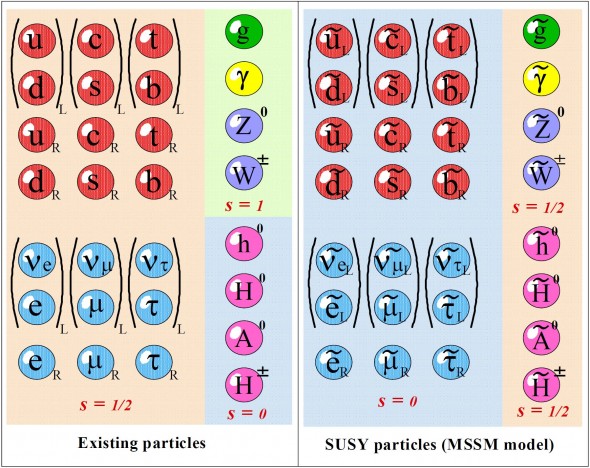CMS Supersymmetry Searches

Supersymmetry (SUSY) links the two different classes of particles known as fermions and bosons, which are classified like that in Standard Model based on a property known as spin.Fermions all have half of a unit of spin, while the bosons have 0, 1 or 2 units of spin. According to the SUSY model, every Standard Model partcle has a partner with a spin that differs by half of a unit, so that bosons are accompanied by fermions and vice versa. SUSY brings the two types together. And also many SUSY theories predict that the lighest supersymmetric particle is stable, electrically neutral and to interact weakly with the particles of the Standard Model, which makes it a perfect candidate for Dark Matter. Supersymmetry is a framework that builds upon the Standard Model’s strong foundation to create a more comprehensive picture of our world. Perhaps the reason we still have some of these questions about the inner workings of the universe is because we have so far only seen half of the picture.
The Standard Model has worked beautifully to predict what experiments have shown so far about the basic building blocks of matter, but physicists recognize that it is incomplete. Supersymmetry is an extension of the Standard Model that aims to fill some of the gaps. It predicts a partner particle for each particle in the Standard Model. These new particles would solve a major problem with the Standard Model – fixing the mass of the Higgs boson. If the theory is correct, supersymmetric particles should appear in collisions at the LHC.
The contribution of the ITU CMS group on SUSY searches is mainly on single lepton channel (See. CMS SUSY-16-019)
Updated:
2017-01-01
